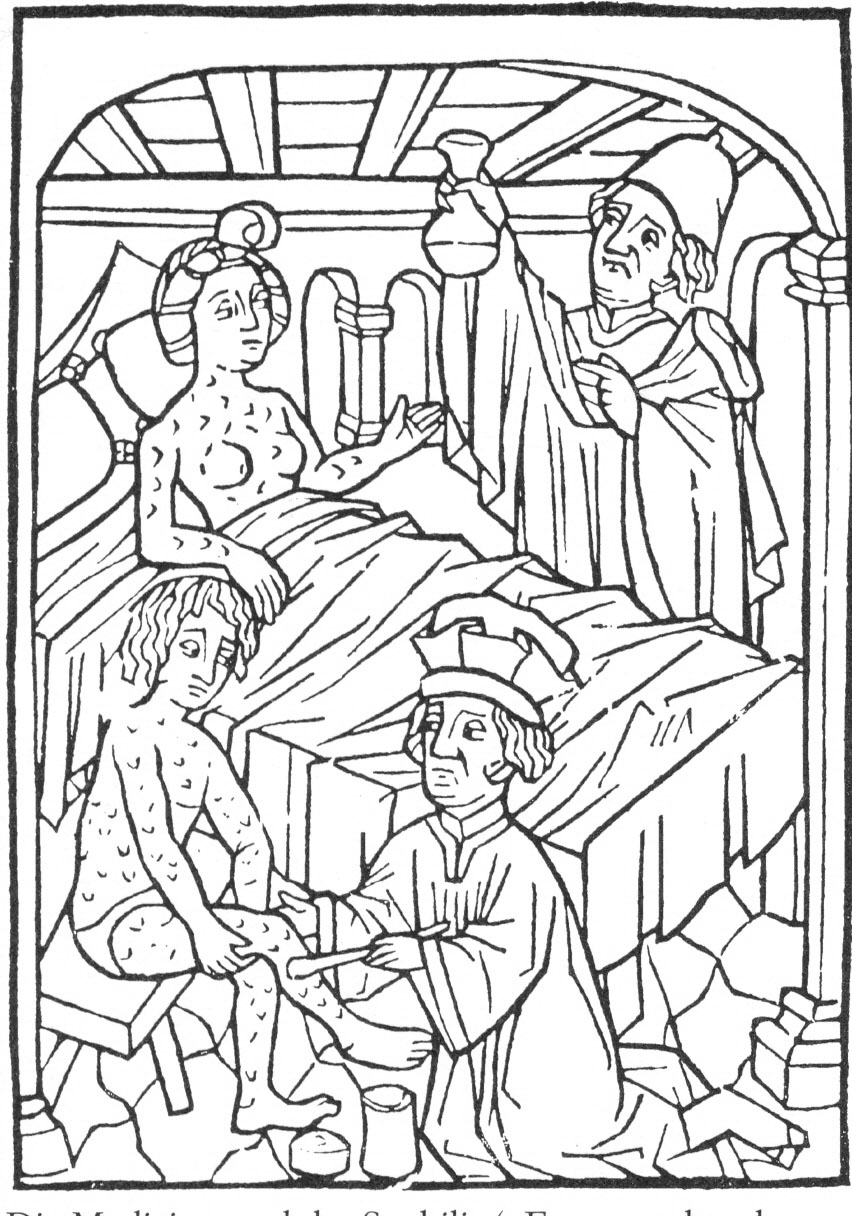 Health & Physiology
Health & Physiology
Diversity matters – Syphilis and related diseases in historical Europe
Diseases such as syphilis, yaws and bejel are making a comeback. We found an unprecedented diversity of these diseases, possibly pre-dating Columbus’ American expedition long claimed to have introduced syphilis to Europe.

First historical cases of sexually transmitted syphilis were documented by Italian doctors in the wake of Neapolitan war. The disease was characterized by painful pustules, frightful facial deformities, eventual madness and even death. The bacteria responsible for this scourge, Treponema pallidum (also known as T. pallidum), cause a group of closely related diseases called treponematoses, each by a different subspecies of the treponeme bacteria. After the 1920s, penicillin rendered the treponematoses treatable, but both syphilis and its relatives, bejel and yaws, still threaten human health; they cause over 10 million new cases each year. Today, yaws and bejel are mostly met in tropical and desert climates, and transmit mainly through skin contacts, whereas syphilis boasts a global presence and consistently spreads through sexual transmissions.
The source of treponemal epidemics is highly debated, especially for the sexually transmitted syphilis. The most popular hypothesis so far holds Christopher Columbus and his sailors liable for bringing the disease to Europe from the New World. We wanted to know whether T. pallidum was already present in Europe before Christopher Columbus returned, and what kind of treponematoses were present in Europe in the past. With ancient bacterial genomes recovered from human skeletons we could finally test these intriguing hypotheses.
Until recently, only historical sources, bone lesions on archaeological finds and genetic data from modern strains could give traces to T .pallidum’s past. This changed when we retrieved the first ever historical T. pallidum genomes from skeletons of three infants excavated in Mexico City. The diagnostic marks such as inflammation on their bones indicated a syphilis infection, yet only two of the recovered T. pallidum genomes represented the bacteria that causes syphilis, whereas the third belonged to another subspecies of treponemal pathogen causing yaws.
Our next step towards defining the origin story of treponemes, was discovering the pathogens’ DNA on ancient European human samples. This time, our international team sampled seven human skeletal remains from early modern Europe (15th to 18th century), where potential treponemal infection was indicated, for example by bone lesions or malformed molars. Four of the individuals were found positive for T. pallidum DNA, and we proceeded to reconstruct genomes of the treponemal strains affecting them through genetic analyses.
Again, we found both syphilis and yaws strains, this time from three individuals from the far northern Europe: Finland and Estonia. The observation meant that historically, yaws (now only present in tropical locations) existed in Europe, and that syphilis-causing strains overlapped with the distribution of yaws-causing strains already in the early modern period. The individual from the Netherlands had suffered from an even more unexpected condition, a previously unknown type of treponematosis without an existing modern counterpart. Not only did this newly found T. pallidum genetically resemble both syphilis and yaws, but it also formed its own branch apart from all the modern subspecies. Perhaps there has been many historical strains that we cannot witness today. Furthermore, some of them could be ancestors to the modern lineages, developed locally in Europe. Since the time window of our samples’ radiocarbon dates span around 100 years around Columbus’ return from his expedition, we could not concretely prove nor exclude the American origin of syphilis. However, with the molecular dating based on mathematical modeling as an additional support, we concluded that the Old World origin instead of the Columbian introduction was, at least, a realistic possibility.
The surprising diversity and plasticity of T. pallidum subspecies among the ancient genomes revealed in our study demonstrates how strikingly far and wide the treponematoses had spread in the early modern Europe, especially assuming the pathogen arose or arrived merely a few centuries back. We also discovered an unprecedented form of treponeme bacteria, suggesting a potentially much more complex history of coexistence between a formidable pathogen and its human host, than was ever known before.
Original Article:
Majander, K. et al. Ancient Bacterial Genomes Reveal a High Diversity of Treponema pallidum Strains in Early Modern Europe. Current Biology 30, 3788-3803.e10 (2020)Next read: 7000 years of the peopling of present-day France revealed by paleogenomics by Melanie Pruvost
Edited by:
Zoé Valbret , Senior Scientific Editor
We thought you might like
A bacterium with the power of changing the course of Human history
Mar 15, 2019 in Microbiology | 3.5 min read by Nicolás RascovanAn ancient affair: a Neandertal woman and a Denisovan man had a daughter
Jun 19, 2019 in Evolution & Behaviour | 4 min read by Viviane SlonTracing the Ancestral Roots of Neandertals
Feb 5, 2020 in Evolution & Behaviour | 3 min read by Stéphane PeyrégneBeware of humans and glacial maximums – the story of cave bear extinction
Mar 25, 2020 in Evolution & Behaviour | 3 min read by Verena J. Schuenemann , Joscha GretzingerMore from Health & Physiology
Chemotherapy and heart failure
Mar 25, 2024 in Health & Physiology | 2.5 min read by Hector Villarraga , Mariana Garcia ArangoStressing the gut-brain axis
Jan 29, 2024 in Health & Physiology | 3.5 min read by Niklas Blank , Kai Markus Schneider , Christoph ThaissTaurine: a supplement for extending life-span and health
Jan 24, 2024 in Health & Physiology | 3 min read by Vijay Kumar Yadav , Parminder Singh , Kishore GollapalliTake Them Outside: Cold Air Helps Croup Symptoms in Kids
Jan 3, 2024 in Health & Physiology | 3.5 min read by Zoé ValbretHow the immune response to a common virus may target the brain in multiple sclerosis
Dec 20, 2023 in Health & Physiology | 4 min read by Olivia ThomasEditor's picks
Trending now
Popular topics


